Always of huge strategic importance at the entrance to the Mediterranean, Tangier is the enthralling gateway to Africa, a tantalising introduction to a culture vastly different from that across the Strait of Gibraltar.
1 Medina
Tangier's Medina (Old City) tumbles down the cliff towards the
ocean in a labyrinth of narrow alleyways. The central vortex of Medina
life is the square known as the Petit Socco, where old men sit
for hours drinking tea and playing backgammon. During its fast-paced
past, the Medina was a playground for author Paul Bowles and America's
legendary Beatnik literary figures such as Jack Kerouac, Allen Ginsberg
and William Burroughs. Wandering around this area is a must for Tangier
visitors.
Just west of the Petit Socco on Rue Siaghine is The Church of the Immaculate Conception, built by the Spanish in 1880. East of the square is the Grand Mosque. In the southeast corner of the Old City is the Old American Legation, once the US consulate building and the oldest American diplomatic post. The museum inside traces the history of the relationship between the US and Morocco: as Morocco was one of the first countries to recognise American independence, the US established its legation in Tangier in 1821. The interesting exhibits inside include George Washington's famous letter to Mouilay Abdullah.
Just west of the Petit Socco on Rue Siaghine is The Church of the Immaculate Conception, built by the Spanish in 1880. East of the square is the Grand Mosque. In the southeast corner of the Old City is the Old American Legation, once the US consulate building and the oldest American diplomatic post. The museum inside traces the history of the relationship between the US and Morocco: as Morocco was one of the first countries to recognise American independence, the US established its legation in Tangier in 1821. The interesting exhibits inside include George Washington's famous letter to Mouilay Abdullah.
2 Kasbah
The Kasbah, where the sultan once lived, dominates the
Medina's northern section. The gate opens onto a large courtyard, which
leads to the Dar el-Makhzem Palace and the modern-day Kasbah Museum.
The palace was built in the 17th century and enlarged by each reigning
sultan. The carved wooden ceilings and marble courtyard showcase the
intricacies of Moroccan craft-work. Also in the Kasbah is the infamous Cafe Detroit, which became a haunt for the visiting and expat writers, artists and hangers-on in the 1960s.
3 Kasbah Museum
The Kasbah Museum brings together an amazing number of
exhibits tracing Morocco's history. The Antiquities Collection brings
together finds from Roman sites such as Lixus and Volubilis
and includes a life-size model of a Carthaginian tomb. There are also
displays explaining Tangier's history and a large section devoted to
Moroccan arts. The Fes Room is particularly interesting,
containing silks and illustrated manuscripts as well as centuries-old
ceramics decorated from golden yellow to the famous Fes-blue.
4 Ville Nouvelle
Tangier's Ville Nouvelle (New City) is a must for fans of late
19th and early 20th century architecture as it features many fine
buildings from this time period. Here you'll find the Terrasse des Paresseux
(Terrace of the Idle) where you can look out at the spectacular ocean
view that has captivated so many European artists. With the harbour
before you, look across the water for the hazy silhouettes of Gibraltar and southern Spain in the distance.
The Grand Socco (the main square) marks the end of the New City and entry to the Medina. This is where Tangier locals come to stroll, play and sit in the surrounding cafes for hours. Just to the square's north is the Mendoubia Gardens, a shady spot full of fig and dragon trees.
The Grand Socco (the main square) marks the end of the New City and entry to the Medina. This is where Tangier locals come to stroll, play and sit in the surrounding cafes for hours. Just to the square's north is the Mendoubia Gardens, a shady spot full of fig and dragon trees.
5 Contemporary Art Museum
This art gallery is devoted to modern Moroccan art, with works by the
country's big-name artists on show. The gallery's grand old building
dates to the 17th century. Peaceful gardens surround the museum, making
the attraction a relaxing respite to the bustle outside.
6 Beach
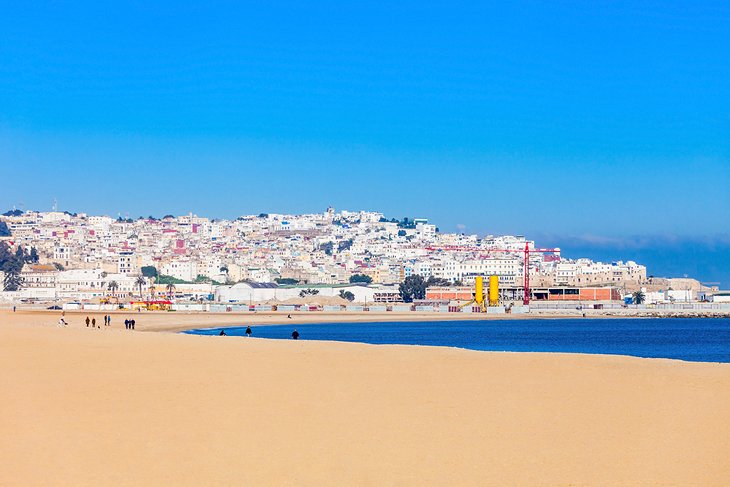 |
| Beach |
Tangier's beach side district is intrinsically linked to the
city's heady 1960s, when the beautiful and louche literary residents
made this one of the world's most famous strips of sand. Its hey-day is
now long gone, but the beach area is still a good place for a stroll
with plenty of locals promenading and playing football along its length.
7 Cap Spartel
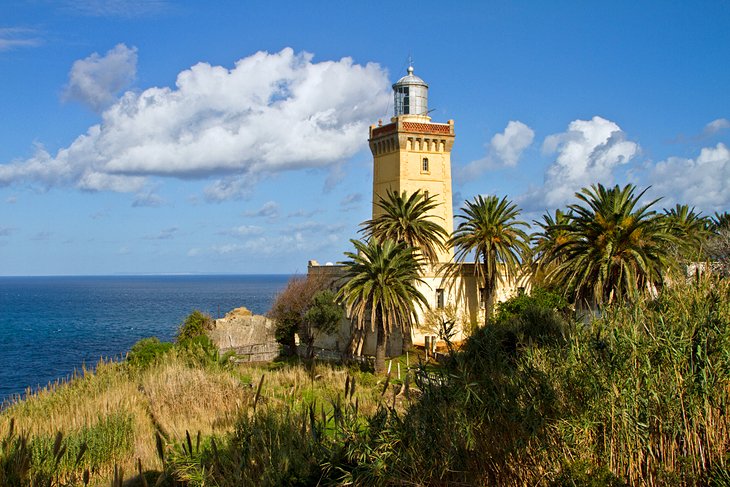 |
| Cap Spartel |
Cap Spartel marks Africa's
northwest tip. The promontory projects into the water marking the
boundary of Mediterranean Sea with Atlantic Ocean. The best time to come
here is at sunset, when you can see dusk settle over the Atlantic. The lighthouse here, at the tip of the promontory, is especially photogenic.
Location: 11 km west of Tangier
8 Asilah
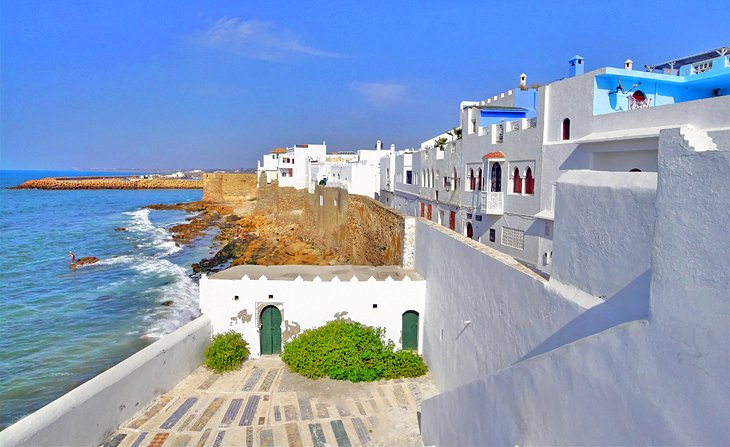 |
| Asilah |
The little town of Asilah, on the northwest tip of Morocco's
Atlantic coast, has a history that stretches back to the Roman era. More
recently, it has been under the control of both Spain and Portugal. But the town's imposing ramparts, with surviving bastions and towers, now offer a setting for delightful seaside walks. The Portuguese fortifications enclose an old town
of pretty white-and-blue-washed houses with a distinctive Mediterranean
feel. The town is also famous for fried seafood dishes. Restaurants
line the shore, making for a great place to put your feet up while you
sample some fish.
Location: 40 km from Tangier
9 Larache
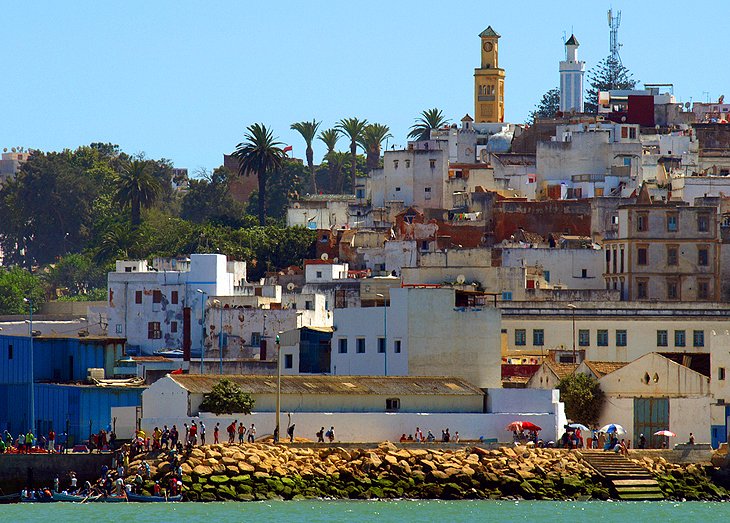 |
| Larache |
The seaside town of Larache is the closest settlement to the Lixus
archaeological site, where Greek legend tells that Hercules gathered
the golden apples. The site includes a temple, theatre, acropolis and
baths. Back in town itself, Larache's Archaeological Museum is housed in the Chateau de la Cigogne.
The museum contains a collection of finds unearthed from Lixus,
including an interesting display of perfume bottles and jewellery.
10 Ceuta
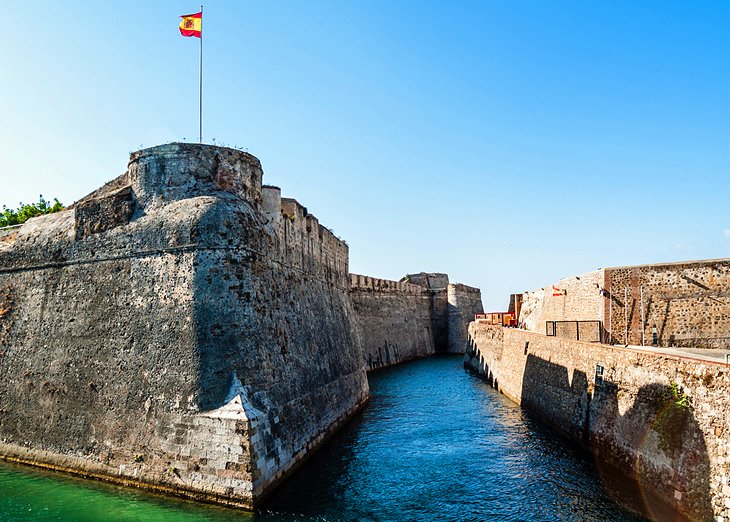 |
| Ceuta |
Spain's little piece of Morocco, this oddity of a town is a major transport hub with ferries across the sea to Algeciras. The old fortifications (built by the Portuguese) around the San Filipe Moat are the town's main sight, but the Ceuta Museum is also worth a look for its well-displayed collection of Punic and Roman finds.
Those with an interest in religious art and architecture should also visit Ceuta's main square - home to the interesting Cathedral Museum and the 15th century Church of Our Lady of Africa.
Those with an interest in religious art and architecture should also visit Ceuta's main square - home to the interesting Cathedral Museum and the 15th century Church of Our Lady of Africa.
11 Melilla
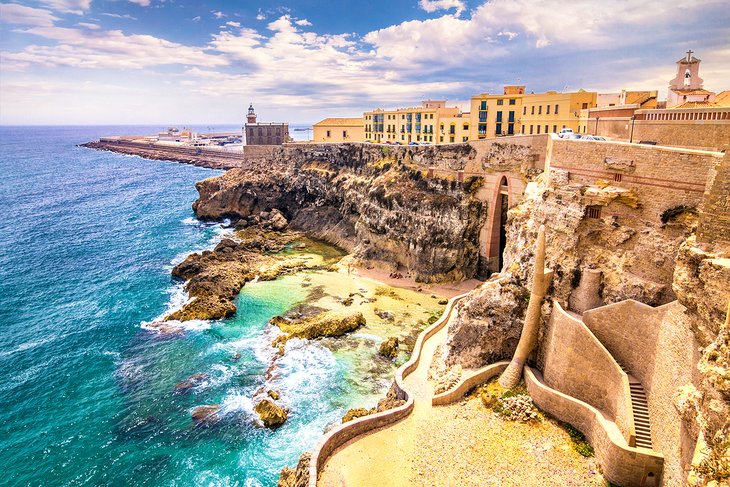 |
| Melilla |
Melilla's fortified Medina is the centre of most of the town's sightseeing. The museum here is worth a look for its interesting archaeological section. There is a 17th century cathedral here as well. At nearby Three Fork's Cape,
gaze out over the perfectly turquoise waters. From the lighthouse you
can see the many small beaches and great blocks of anthracite rise out
of the waters.
History
According to Greek mythology Tangier, or Tingi, was founded by the giant Anteus. Tingi is mentioned by Carthagian travellers as early as 500 BC, and Phoenician sailors visited even earlier. After the destruction of Carthage, Tingi was affiliated with the Berber kingdom of Mauretania. It then became an autonomous state under Roman protection, eventually becoming a Roman colony in the 3rd century AD during the reign of Diocletian, and ending as the capital of Mauretania Tingitana. In the fifth century Vandals conquered and occupied Tingi and from here swept across North Africa.A century later Tingi became part of the Byzantine Empire and gradually fell into obscurity until the city's capture by Moussa bin Nasser during the first years of the eighth century. The city's inhabitants were converted to Islam but many Berber tribes joined the schismatic Kharijite rebellion and seized the port city in AD 739. When Moulay Idris I established his kingdom at Volubilis in AD 788, Tangier became a focal point in the struggle between the Idrissid dynasty and the Umayyads. This struggle continued until the Fatimid dynasty from Tunisia assumed power in AD 958.
Tangier came under the successive sway of the Almoravides and Almohades, after which the city fell under the influence of the Tunisian Hafsid dynasty before passing into the hands of the Merinids. By the 14th century Tangier became a major Mediterranean port frequented by European trading vessels bringing cloth, spices, metals and hunting birds in exchange for leather, wool, carpets, cereals and sugar. After an unsuccessful attempt to seize Tangier in 1437, the Portuguese finally conquered and occupied the city in 1471, converting the great mosque into a cathedral. For nearly three centuries the town was passed back and forth between the Spanish, Portuguese and finally the English, when it was given to Charles II as part of the dowry from Catherine of Braganza.
The English granted Tangier a charter, which made the city equal to English towns. In 1679 Moulay Ismail made an unsuccessful attempt to seize the town but maintained a crippling blockade, which ultimately led to a British retreat. Under Moulay Ismail the city was reconstructed to some extent but the city gradually declined until, by 1810, the population was no more than 5,000. Tangier began to revive from the mid-19th century when European colonial governments fought for influence over Morocco.




















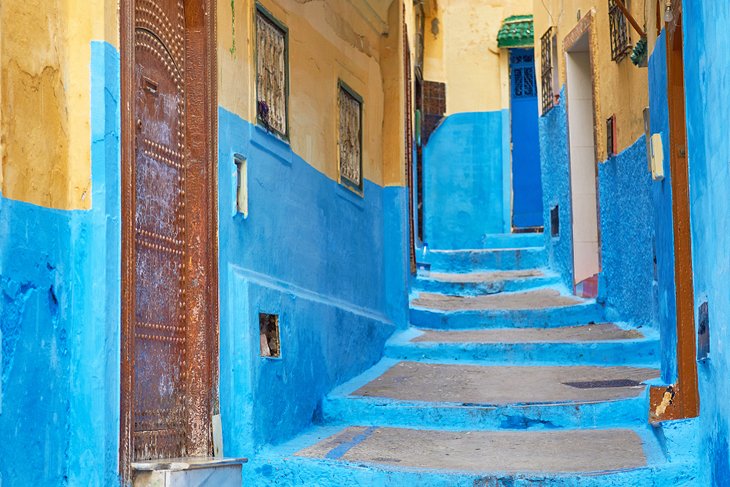
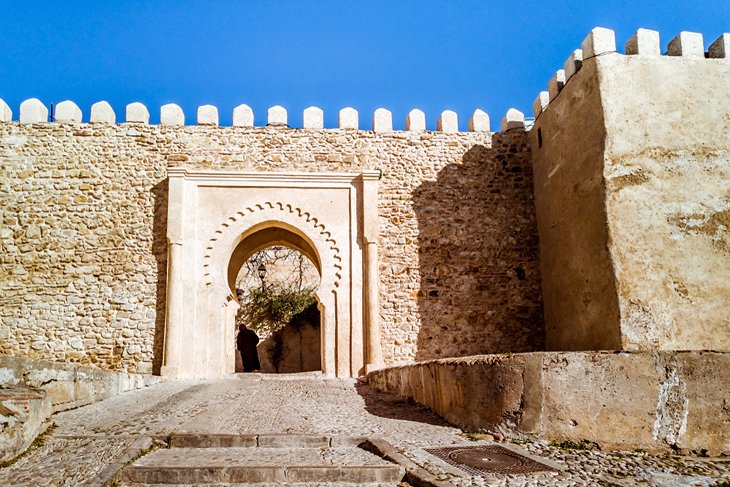
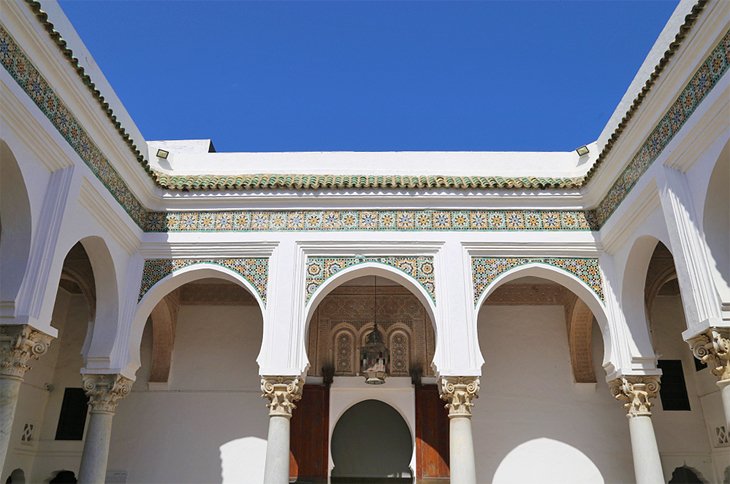
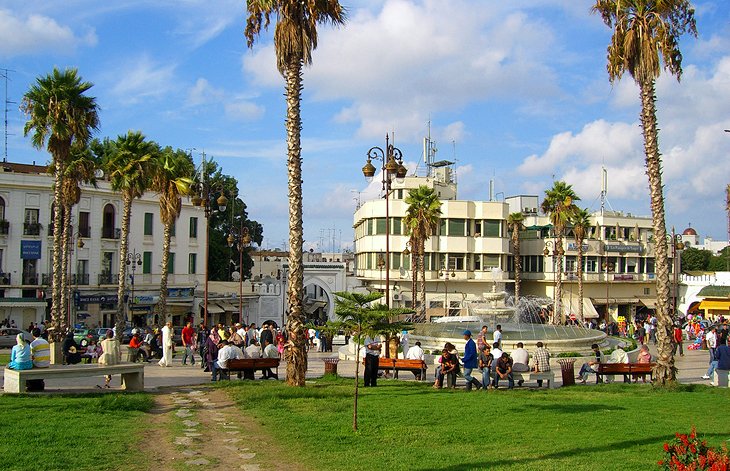
0 comentarios :
Publicar un comentario